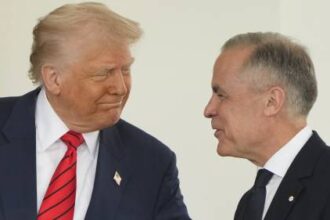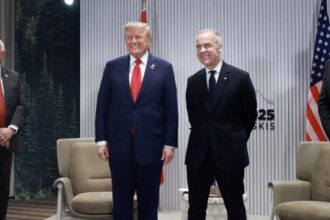In a move that has sent shockwaves through global technology markets, former President Donald Trump announced yesterday his intention to impose a sweeping 100 percent tariff on all imported computer chips if he returns to the White House. This bold declaration comes amid an increasingly tense campaign season where economic nationalism has taken center stage.
“We’re going to put a 100 percent tariff on computer chips,” Trump stated during a campaign rally in Michigan, a critical battleground state with significant manufacturing interests. “America used to make these things. Now we’ll make them again, and companies will pay double if they want to import them.”
The announcement represents a significant escalation in Trump’s protectionist trade agenda, which previously included targeted tariffs on Chinese goods during his administration. Industry analysts at Goldman Sachs estimate that such a comprehensive tariff would potentially increase consumer electronics prices by 15-30 percent across numerous categories, from smartphones to laptops, gaming consoles, and even modern automobiles.
Taiwan Semiconductor Manufacturing Company (TSMC), the world’s largest contract chipmaker, saw its shares drop nearly 4 percent following Trump’s comments, while South Korean semiconductor giant Samsung experienced a similar decline. American chip manufacturers like Intel initially saw share prices rise on the prospect of reduced foreign competition, but gains were tempered by concerns about retaliatory measures from affected countries.
“This would fundamentally reshape global supply chains in ways we haven’t seen in decades,” said Dr. Margaret Chen, senior technology policy analyst at the Peterson Institute for International Economics. “The semiconductor industry is extraordinarily complex and interdependent. No single country, including the United States, currently possesses the complete ecosystem to produce all types of chips independently.”
The proposed tariff comes as Congress recently passed the CHIPS Act, allocating over $52 billion to boost domestic semiconductor manufacturing. However, industry experts note that even with this investment, building self-sufficient chip production capabilities would take years, if not decades.
Commerce Secretary Gina Raimondo characterized Trump’s tariff proposal as “economically reckless,” noting that “the immediate effect would be higher prices for American consumers and businesses, without delivering the promised manufacturing jobs for years.”
The global implications extend beyond economics. Taiwan, which produces over 60 percent of the world’s semiconductors and more than 90 percent of advanced chips, faces particular vulnerability. Any disruption to Taiwan’s chip industry amid existing tensions with China could create both economic and geopolitical ripple effects across the Indo-Pacific region.
European Union officials have already indicated they would consider countermeasures if such tariffs were implemented. “This would violate numerous WTO agreements and trigger an appropriate response,” stated EU Trade Commissioner Valdis Dombrovskis.
For everyday consumers, the impact would be felt most directly through higher prices on technology products. Industry analysis suggests the average smartphone could cost $150-300 more, while laptops might see price increases of $200-500 depending on specifications.
As the world grows increasingly dependent on semiconductor technology for everything from artificial intelligence to renewable energy systems, one question remains particularly pressing: In pursuing economic nationalism through aggressive tariffs, are we sacrificing the technological cooperation needed to address our most urgent global challenges?














